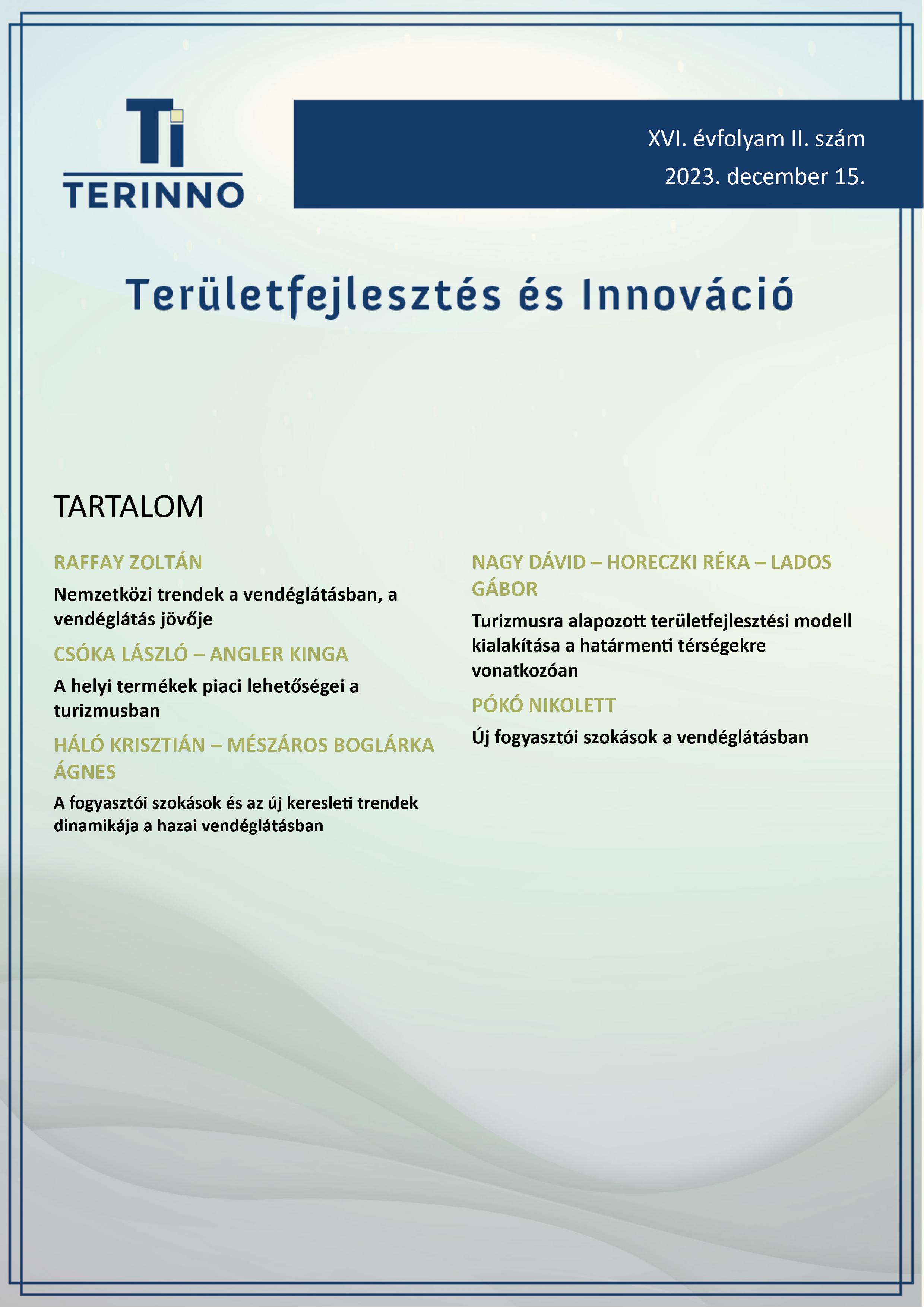Conceptualizing a tourism-based spatial development model for border areas
DOI:
https://doi.org/10.15170/terinno.2023.16.02.04Keywords:
border area, spatial development, tourism, population changeAbstract
This study is focusing on spatial development in a theoretical and summarizing context. It aims to define, based on previous research results, the theoretical framework of a new spatial development model. Among the theoretical principles, the delimitation of border regions and the evaluation of cross-border cooperation are of crucial importance. The clarification of the concepts of trade and hospitality, local products and local food also contributes to an objective interpretation.
The study aims to assess the potential routes of economically and socially disadvantaged border regions for development, to identify the problems of these areas and to provide a theoretical basis for overcoming certain handicaps. The research will examine the conditions for applying a model of territorial development based on cultural heritage, and the characteristics that are needed at the regional level. The model presented in the study will help to develop tourism development and related development tools that can achieve a significant territorial development impact within their region.

